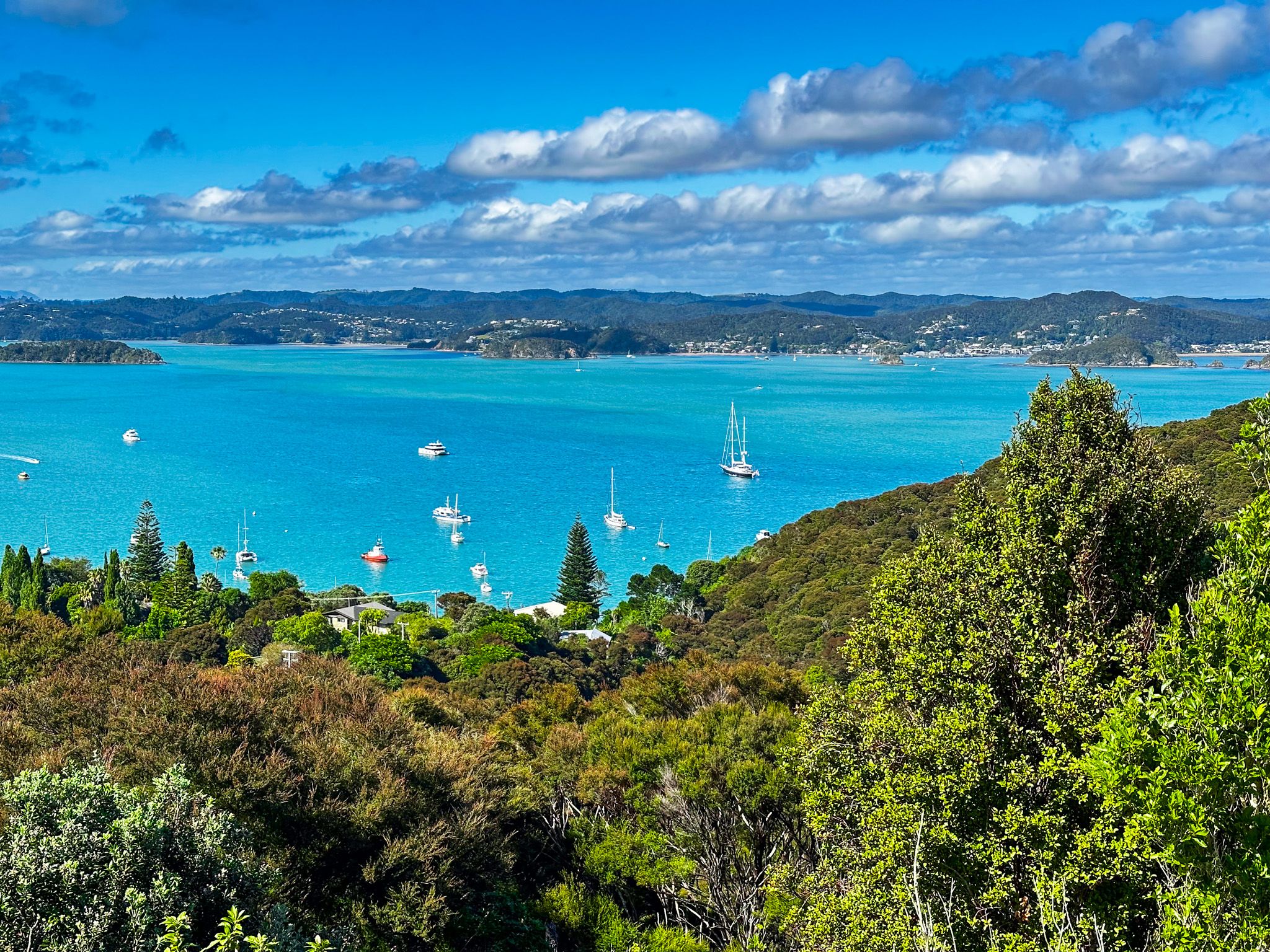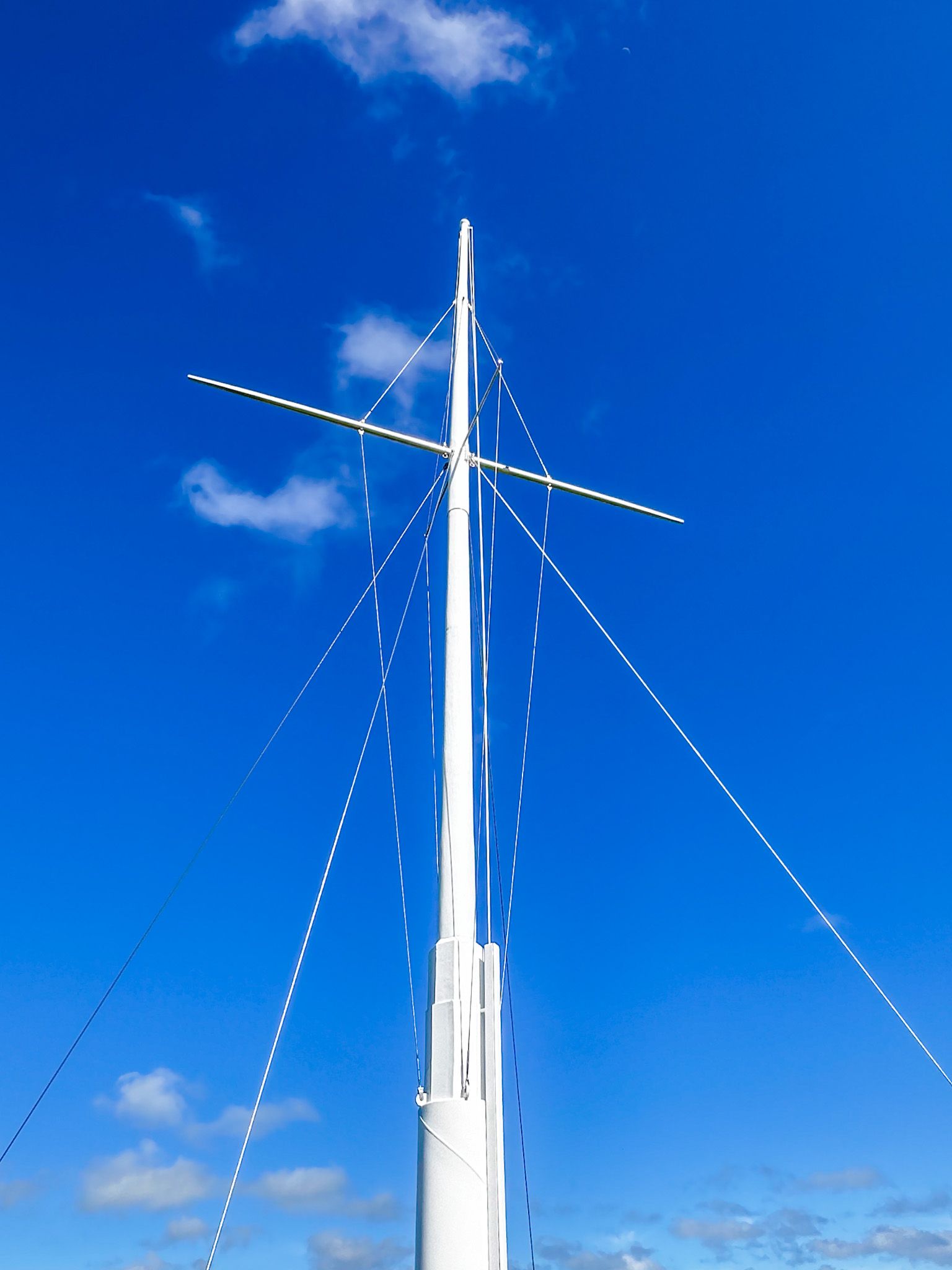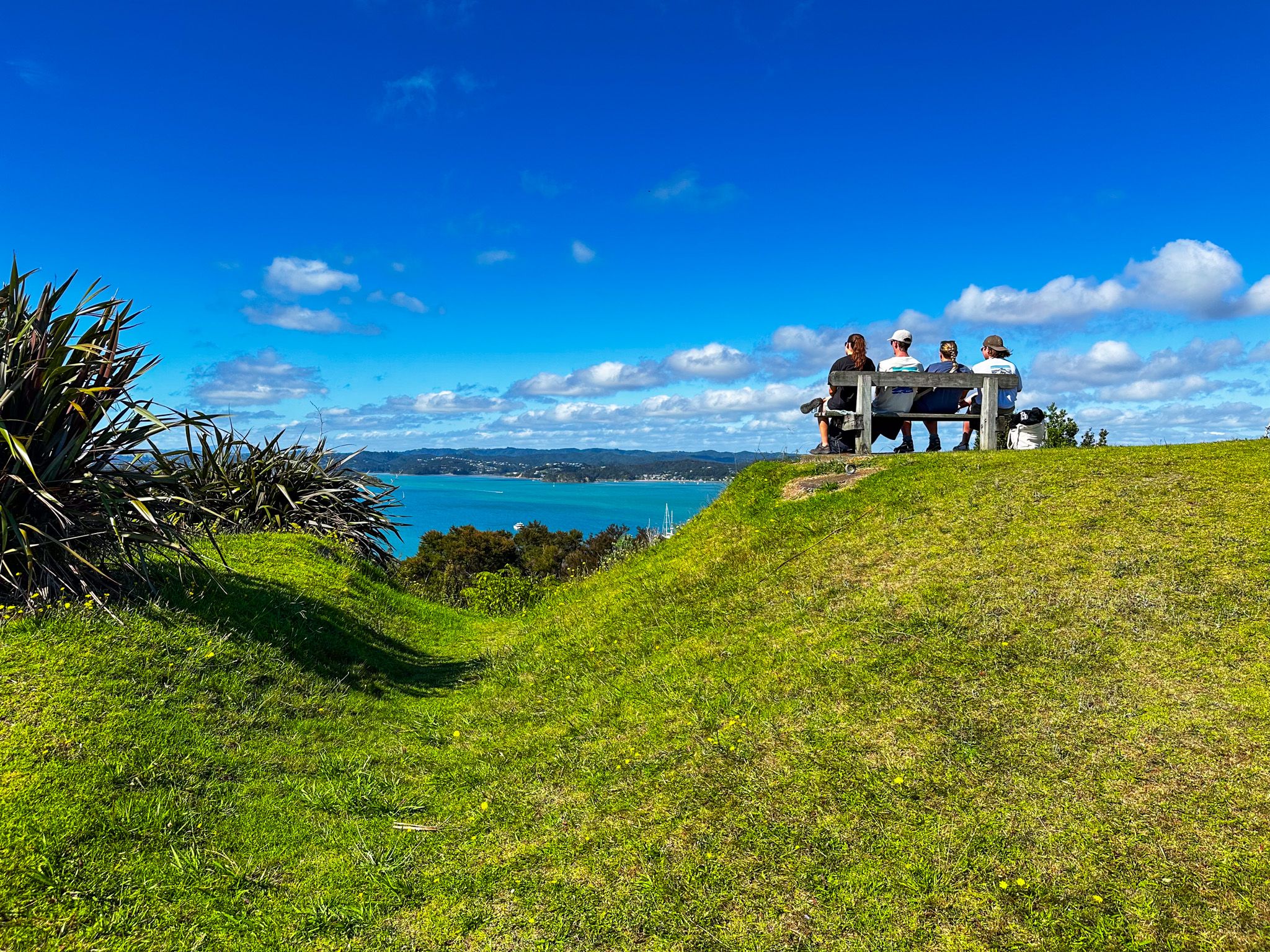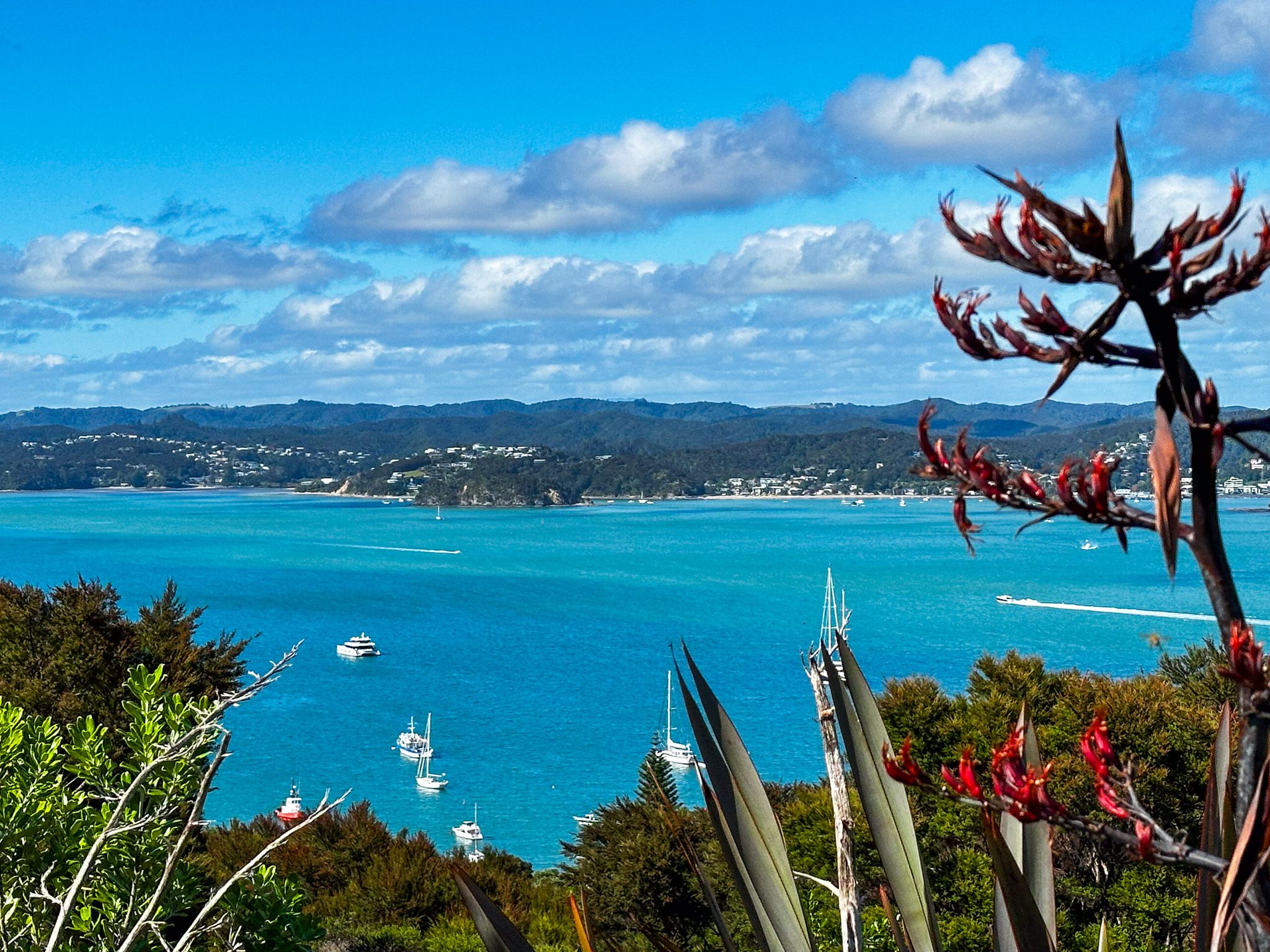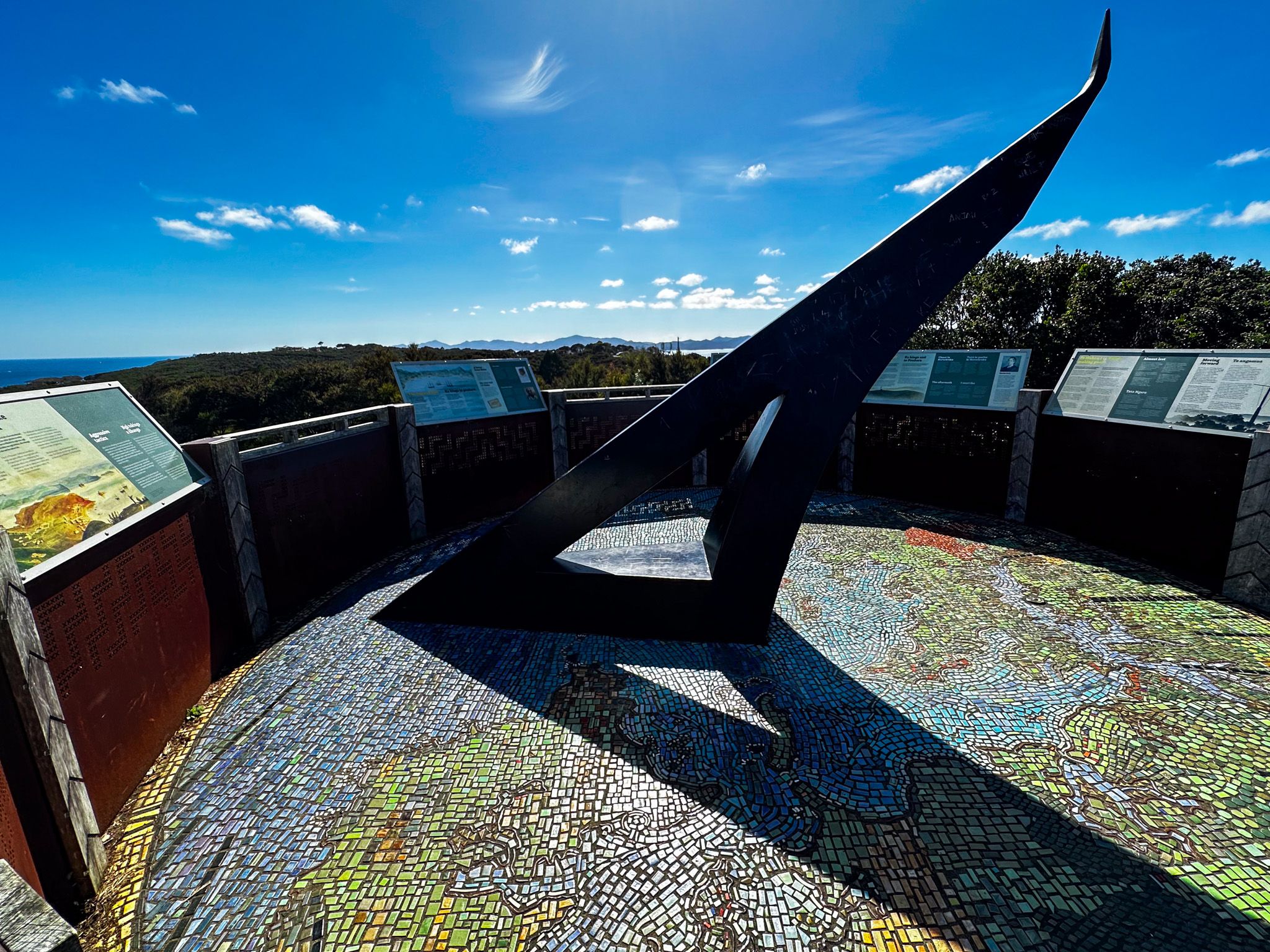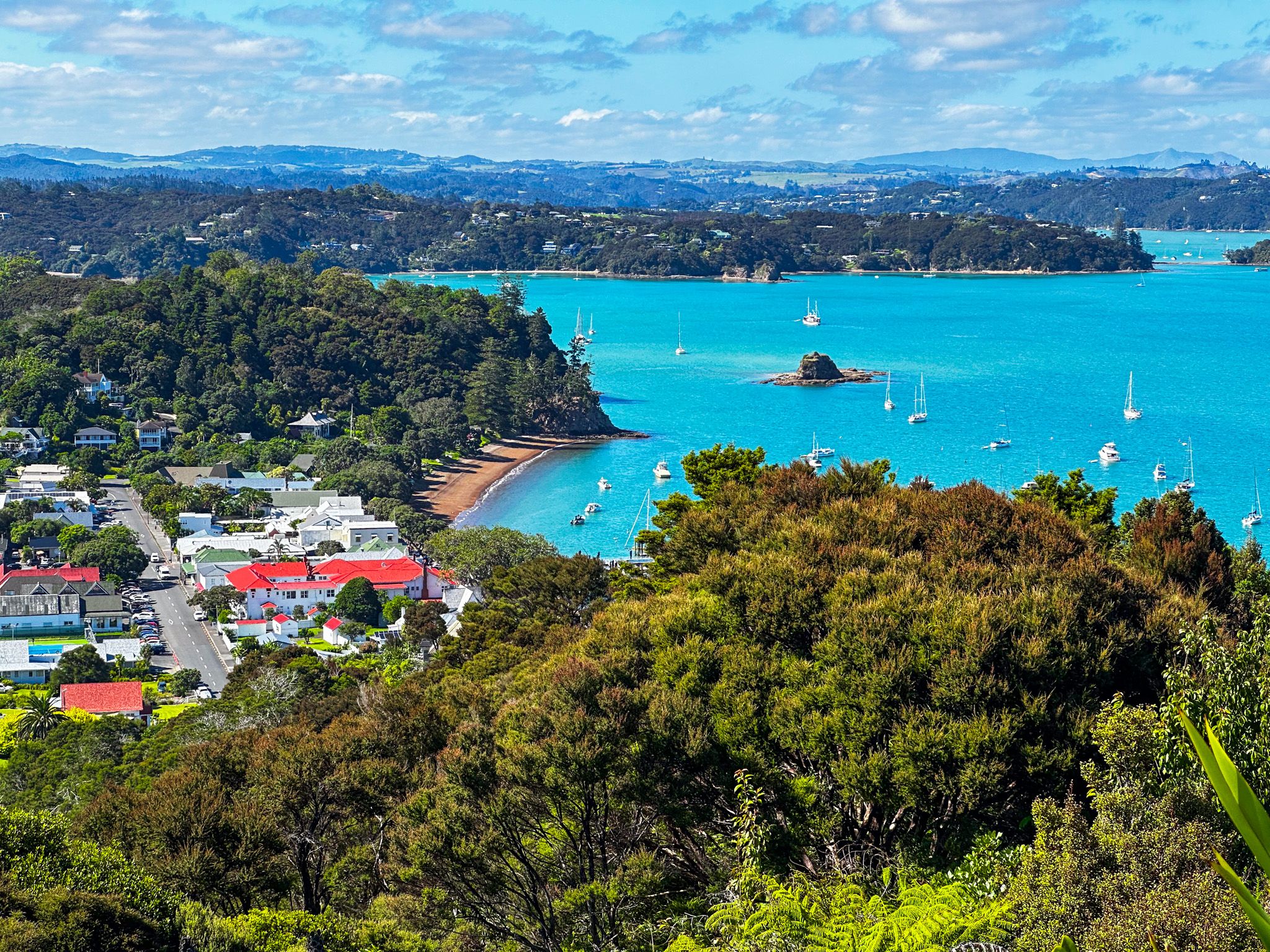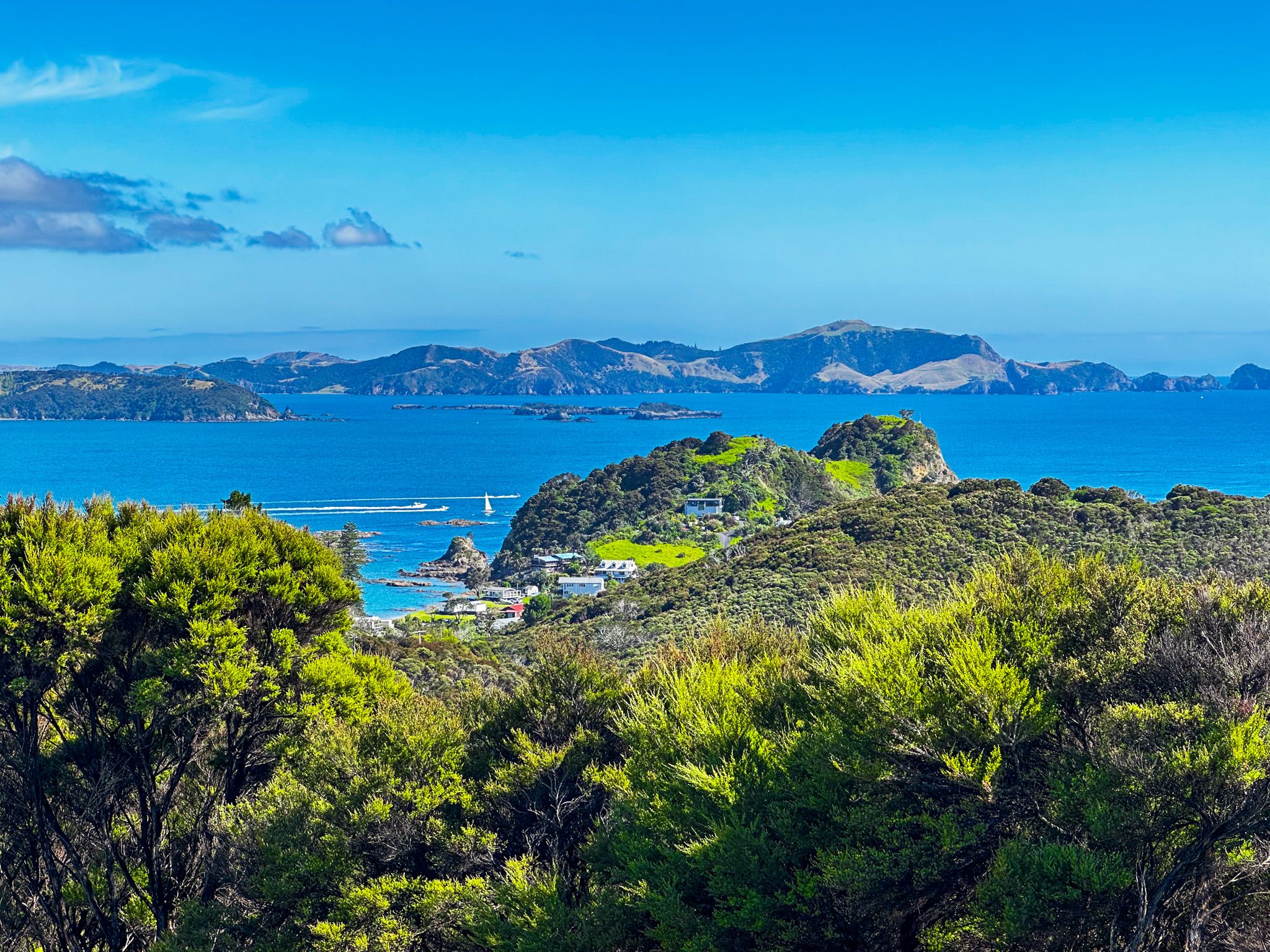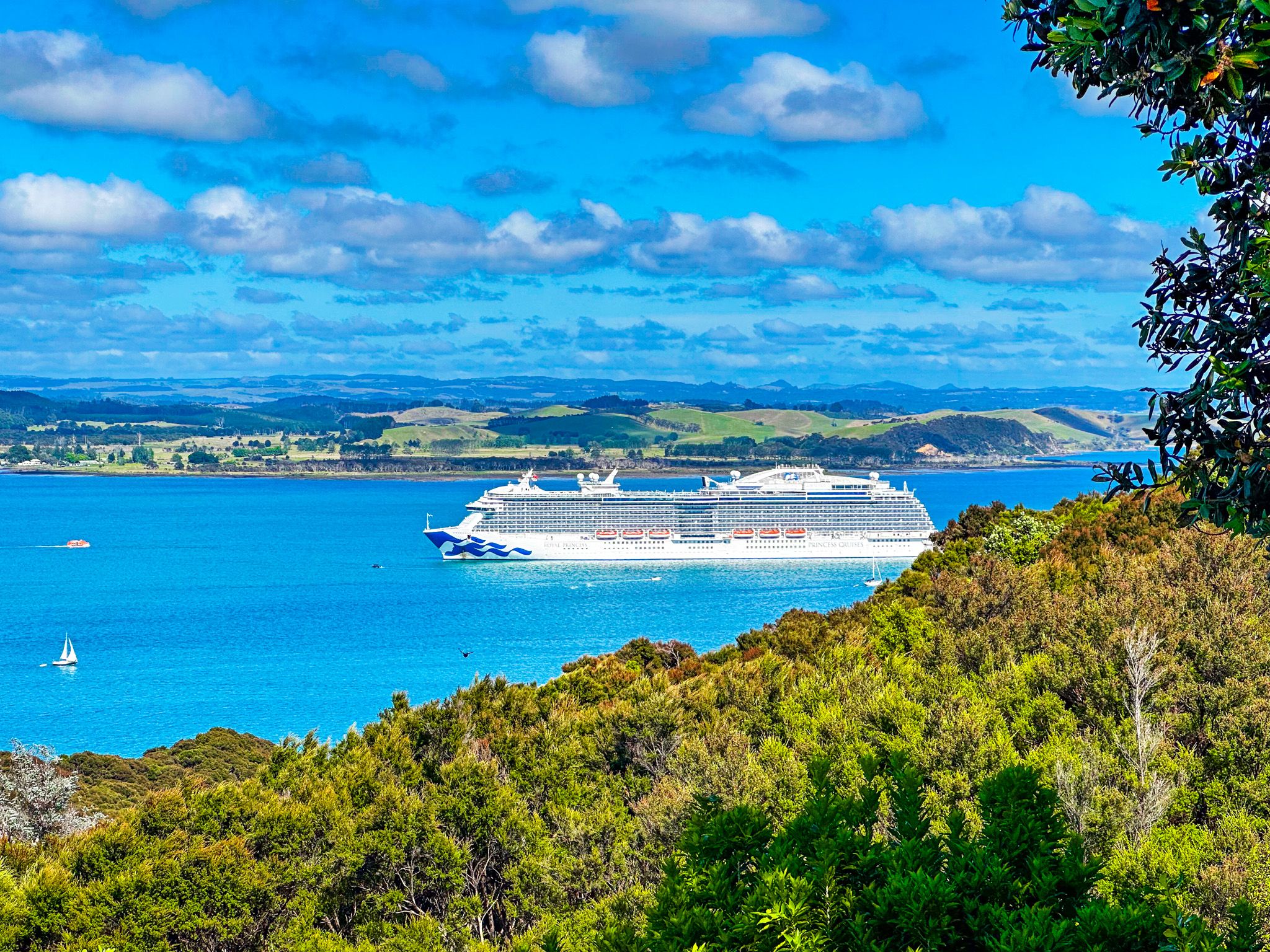Te Maiki, also Flagstaff Hill and Flagstaff Historic Reserve, is a prominent hill immediately north of Russell in the Bay of Islands. You can drive to the top from Russell on Flagstaff Road (a few minutes) or walk for about 25 minutes along Flagstaff Hill Track from the north end of Kororāreka Bay. The nearly 360-degree views from the top are superb, making it a must-do for visitors.
The hill is also highly significant in the early history of NZ, and a series of panels outline this. The original flagstaff was a gift in the mid-1830s from Hōne Heke to James Busby. Busby was the first British Resident or official representative of the British government in NZ. He played a significant role in the politics of NZ during the period, helping to create the first NZ flag, Te Kara and proposing with missionary support the creation of the Confederation of Northern Chiefs and the Declaration of Independence in 1835. Te Kara meant that the British recognised NZ-flagged vessels. Initially, the flagstaff and Te Kara were set up at Busby’s residence at Waitangi. The first governor-general of NZ, William Hobson, moved it to Te Maiki after the Treaty of Waitangi was signed to fly the Union, Jack.
The relationship between the new government and Ngāpui iwi deteriorated in the first few years. There were various factors, but moving Te Kara, new government rules and taxes, and moving to Auckland undermined the Ngāpui mana and their economic base. Hōne Heke and Kawiti decided the flagstaff had become a symbol of oppression and cut it down as an act of defiance in 1844. After three cycles of cutting and restoring, new governor-general Fitzroy decided to bring in a military force from Sydney to protect the flagstaff. This decision, in turn, led to a full-blown assault by a force led by Hōne Heke and Kawiti and the Battle of Kororāreka in 1845. The battle destroyed the town and kicked off the Flagstaff War.
After a year, the war ended in a stalemate, and Hōne Hekle and Kawiti were pardoned. Government policy was to ignore the region, but in 1858, those Ngāpui who had rebelled tried to improve relations by re-establishing and honouring the flagstaff. It was the 5th flagstaff and the one you see today.


